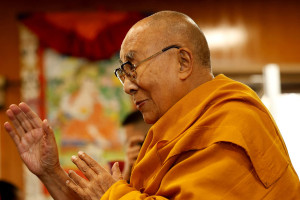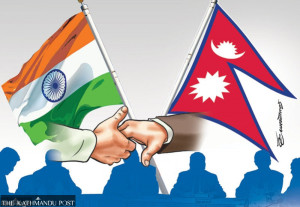Columns
The future of federalism in Nepal
Nepal’s path to stability, unity and prosperity lies in institutionalising and improving it.
Khim Lal Devkota
Nepal’s federalism emerged from decades of political struggle, social movements and demands for equality and inclusion. Although formally adopted only in the 2015 Constitution, the idea is more than 70 years old. Its roots go back to 1952, soon after the fall of the Rana regime, when Madheshi leaders involved in the 1951 democratic movement first proposed a federal structure to protect the Tarai-Madhesh’s identity. When the Nepali Congress leadership rejected this, leaders such as Kulananda Jha and Ramjanam Tiwari formed the Nepal Terai Congress, which, a few years later, formally demanded regional autonomy, marking the beginning of Nepal’s federal journey.
The struggle for federalism persisted through shifting political eras. After King Mahendra dissolved democracy in 1960 and imposed the Panchayat system, Nepal regained multiparty democracy only in 1990. The 2047 BS (1990) Constitution followed, and the 1991 elections revived debates on federal restructuring. The Nepal Sadbhavana Party, led by Gajendra Narayan Singh, became a prominent advocate, emphasising proportional inclusion and the rights of marginalised groups. Its Hindi manifesto called for autonomous provinces across the Himal, Hills and Tarai, reflecting Nepal’s linguistic and cultural diversity.
The Maoist armed conflict, which began in 1996, significantly intensified demands for federal restructuring. The Maoists advocated for identity-based federalism, arguing that entrenched inequalities could only be resolved through a federal system. As the conflict escalated, traditional parliamentary parties weakened, creating a deep political crisis. On February 2, 2005, King Gyanendra seized power, alarming both national and international actors. The 12-point agreement between the parliamentary parties and the Maoists in 2006 paved the way for the People’s Movement of 2006, which restored Parliament and revived democratic politics.
On November 21, 2006, the Government of Nepal and the CPN (Maoist) signed the Comprehensive Peace Agreement (CPA), formally ending the decade-long conflict. The CPA rested on three pillars: restructuring the state, integrating Maoist combatants and completing the broader peace process. While significant progress has been made, Nepal still struggles with the third pillar of transitional justice due to political instability and inadequate political will.
Following the CPA, the Interim Constitution was promulgated on January 15, 2007. Surprisingly, despite championing federalism during the war, the Maoists initially failed to include federalism in the Interim Constitution. This omission ignited the first Madhesh Movement, in which nearly 68 people were killed. The government then signed a 22-point agreement with the Madhesi People’s Rights Forum, committing to proportional inclusion, federal restructuring and autonomous provinces. The First Amendment to the Interim Constitution incorporated the term “federal democratic system,” formally committing Nepal to federalism.
However, when the government did not sincerely implement the agreement, the second Madhesh Movement erupted, leading to an 8-point pact explicitly recognising autonomous provinces and proportional representation. These commitments were later incorporated through the Fifth Amendment to the Interim Constitution.
Thus, the foundation of federalism in Nepal was laid not in 2015 but in the Interim Constitution itself, through political struggle, mass mobilisation and significant sacrifice. While the Madheshi community played a leading role, several other indigenous nationalities-including Rai—Limbu, Tharu, Magar, Gurung, Newar and Tamang communities—also launched strong movements demanding regional autonomy and recognition.
For these communities, the constitutional adoption of federalism in 2015 represented recognition, dignity and hope. Many sacrificed their lives to achieve provincial restructuring. Today, although their movements may appear silent, any attempt to undermine federalism would likely trigger renewed resistance. Federalism in Nepal is therefore not merely a constitutional arrangement; it is the product of generations of struggle for justice, identity and equality.
Fear amid Gen Z movement
Despite its deep roots, Nepal’s federal system came under unexpected pressure during the Gen Z movement. A wave of anti-federal rhetoric, especially on social media, called for the abolition of provinces and questioned federalism, republicanism, secularism and inclusion. The events of September 8 and 9 created widespread uncertainty, with fears that the Constitution might collapse, the military might intervene, or the monarchy might return. Anti-federal voices dominated television interviews and online discussions.
Public anxiety eased only after President Ramchandra Paudel clarified that while the House of Representatives had been dissolved, the Constitution remained intact. On Constitution Day (September 19), the President again reassured the nation, urging political parties to move towards elections. Following this, some Gen Z leaders called for the abolition of federalism, while others supported it. My observation thus far is that Gen Z supports federalism but calls for meaningful reforms to make it effective.
In an interaction programme between about two dozen Gen Z leaders and former chief ministers that I facilitated recently, Gen Zers emphasised that federalism is not a division of territory but a system that ensures representation, identity and inclusion. They stressed that autonomy should never be misinterpreted as a threat to national unity; rather, federalism strengthens unity by respecting Nepal’s diversity. Gen Z leaders posed difficult but crucial questions to the former chief ministers. They asked why, despite having constitutional authority, provincial governments were unable to strengthen institutions or assert their powers. They questioned why central interventions continued in areas that had already been devolved. They raised concerns about the lack of provincial police integration and administrative autonomy—core components of federalism that remain unimplemented. For them, these failures indicated that the problem was not federalism itself but the hesitation, inconsistency and centralised mindset of political leaders.
They argued that although powers have been constitutionally devolved, political thinking and party structures remain deeply centralised. They demonstrated a stronger commitment to federalism than many veteran politicians, recognising that the federal system was designed to uplift marginalised communities and ensure equitable participation in governance. Even those who had strongly advocated abolishing the provinces have since softened their stance and now acknowledge the necessity of provincial structures.
All these developments point to a crucial conclusion: Nepal’s federal system is structurally sound, but its implementation has been weak. The shortcomings arise not from the model but from those responsible for executing it. Yet the future of federalism remains promising. The clarity and commitment shown by Gen Z leaders signal a generational shift capable of strengthening and democratising the system.
Moving forward, Nepal must invest in civic education, public awareness and sustained dialogue, particularly among youth, so they understand the foundations, achievements and long-term benefits of federalism. Political parties must decentralise decision-making, reform their internal culture and empower provincial leadership. Strengthening intergovernmental mechanisms, ensuring fiscal clarity, activating constitutional bodies and completing federal police integration are essential steps.
A constitution is a living document; it must evolve with citizens’ aspirations. When the constitution, laws, policies and budgets are shaped around people’s needs, and the government keeps citizens at the centre, the system encounters fewer problems. This is the very essence of federalism. The Gen-Z movement is not calling for dismantling the Constitution but for improving it through responsible political behaviour, greater transparency across all areas of governance, and full adherence to the principle of subsidiarity.
Federalism in Nepal is the outcome of decades of struggle, sacrifice and collective aspiration. Protecting and strengthening it is both a constitutional duty and a historic responsibility. Nepal’s path to stability, unity and prosperity lies not in retreating from federalism, but in deepening, institutionalising and improving it so that its benefits reach every citizen.




 12.12°C Kathmandu
12.12°C Kathmandu















